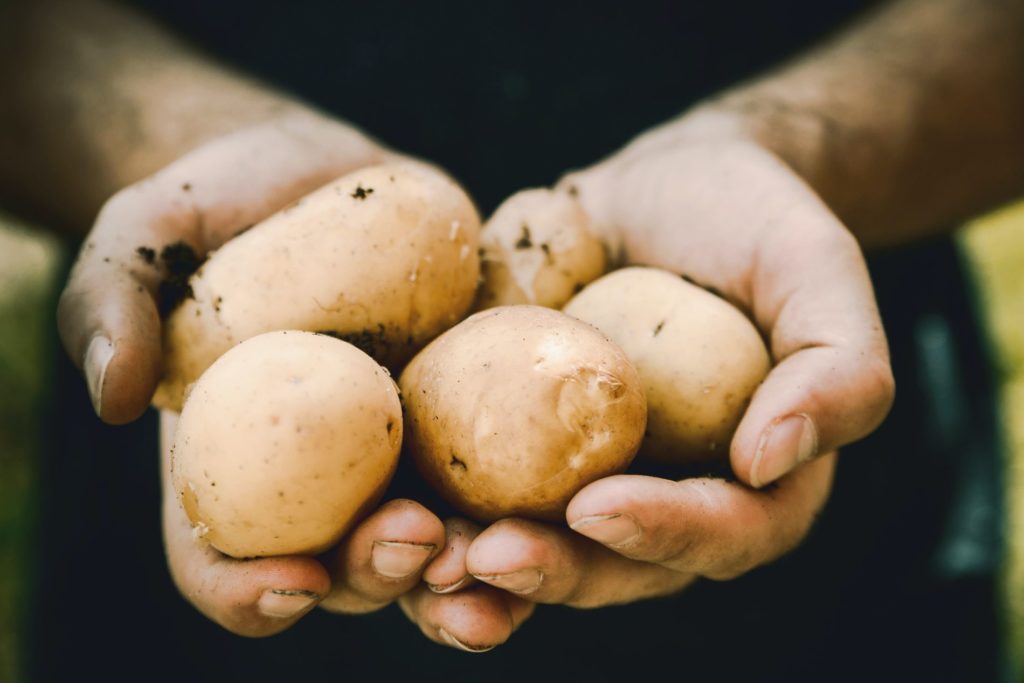It doesn’t matter if it’s your first or 100th time cooking and baking with a new recipe — everyone has that one ingredient they just can’t get right. We’ve all been there (and still are), so don’t worry too much! Let’s learn how to bake a potato, and some of the characteristics of potatoes, a staple of many delicacies in the world today.
The potato is a staple in almost every household since it is a tuber that can be cooked in a variety of ways, including boiling, frying, and baking. We use them in tortillas, scrambled eggs, garnishes, and stuffed or roasted dishes. There are numerous potato-based recipes to choose from.
Potatoes (Solanum tuberosum) were first farmed in the Andes around 8,000 years ago. They were introduced to the gastronomy of the entire continent by the Spanish conquerors who brought them to Europe.
The potato offers a wide range of characteristics and health benefits. They contain carbohydrates as well as minerals like potassium and calcium. Vitamins and dietary fiber are also present. Antioxidants, which help protect cardiovascular and pulmonary disorders, are added to these advantages. Furthermore, they contain carotenoids, which support the immune system.

You Don’t Have To Peel A Potato Before Baking It – how to bake a potato
Some people tend to peel off every single layer of skin until nothing remains except tiny little nubs. But do you really think you will uncover more flavor? Probably not. Peeling away everything isn’t necessary since most skins are already tender enough once cooked. Once again, this comes down to preference. However, peeling does help remove starch buildup and makes mashing easier. Plus, it gives you the option to eat only the best parts of the spuds without having to deal with soggy skins.
There Is No Hard And Fast Rule Of Thumb When Choosing Potatoes
To find the ideal size for baking potatoes, you’ll need to look at how big each individual portion will become while being completely submerged into water. You can either measure using kitchen scissors or cut one yourself. Then divide these numbers by 2.5 to determine the correct diameter to learn how to bake a potato.
When Boiling Your Spuds, Start With Cold Water Instead Of Hot Ones – how to bake a potato
Hot water causes potatoes’ natural sugars (fructose) to break down faster resulting in less complex flavors. Since boiling hot water also cooks the outside quicker, you end up getting starchy centers that taste bland. Conversely, starting with cold water allows the sugar inside to slowly dissolve making room for more nuanced flavors. In regards to timing, start with medium heat so as not to burn the insides before turning them pink on the exterior, which is how to bake a potato.
Avoid Overly Salted Eggs Inside Mashed Potatoes
Salt is great at preserving meats, but its effects on eggs are another story. First off, salting raw eggs too much is detrimental to both texture and taste. Secondly, adding extra sodium chloride to boiled potatoes turns them dry and leaves behind a bitter aftertaste. Finally, never add salt directly to mashed potatoes. Rather, mix it with softened or melted butter beforehand. Otherwise, you might notice unpleasant lumps of white flour floating around.
No Matter What Season, Always Bake Them Whole
Potatoes are mostly composed of water, thus taking forever to boil means wasting energy. Instead, carefully wrap whole unpeeled russet or Yukon gold potatoes in foil. Place them in a moderate oven set to 275 degrees Farenheit (135 C). After roughly 45 minutes, open up the packet and peek at the potatoes. If they’re soft, continue baking. Otherwise, turn off the oven and place potatoes back under the broiler to crisp up the outsides.
As soon as you pull them out, run them under cold running tap water immediately to prevent further cooking. Pat dry thoroughly and store in a plastic bag at room temperature for three days.

Leave a Reply